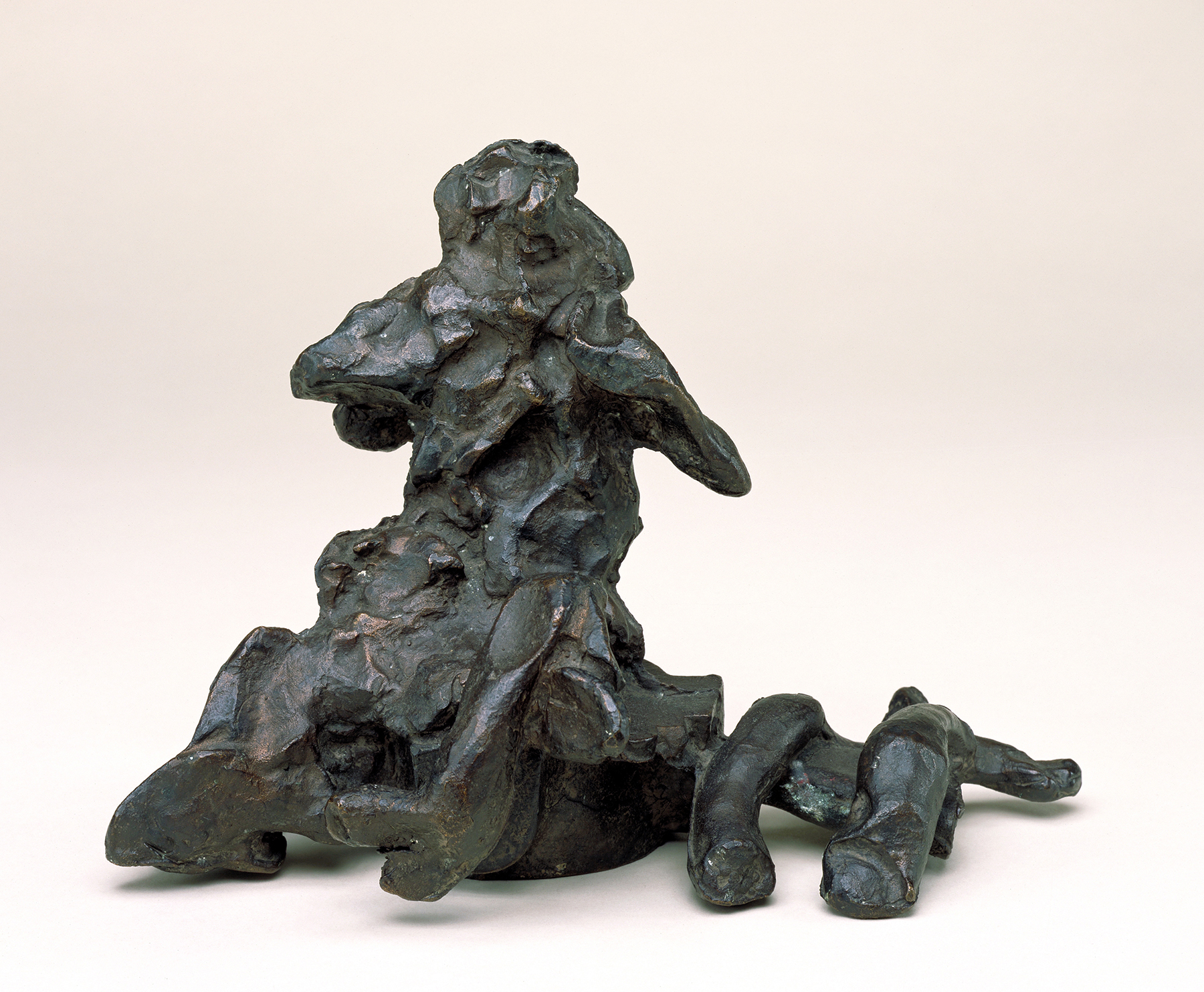
Willem de Kooning, c.1975-80, carboncino su pergamena. 60.3 x 47.6 cm. Collezione privata © 2024 The Willem de Kooning Foundation, SIAE
Italy has always influenced the great artists of the past, but in some cases it has transformed their style, and the link with Italy proved to be fundamental to the creation of great masterpieces.
In 1959, Willem de Kooning, already established as a painter, arrived in Italy to make a trip that proved decisive for his career and the evolution of his artistic style. This period not only solidified his position in the global art scene but also enriched his style, leading him to explore new techniques and materials.
Willem de Kooning in Italia

Willem de Kooning, Villa Borghese, 1960, olio su tela. 203.2 x 177.8 cm. Museo Guggenheim Bilbao © 2024 The Willem de Kooning Foundation, SIAE
Willem de Kooning arrived in Italy at the height of his success. A few months before his arrival, a solo exhibition of his work in his home country of the Netherlands had met with considerable critical acclaim, selling out all the works on display in a short time. This success offered him a financial stability he had never had in his fifty-five years of life.
Although he had left Rotterdam for the United States as a young man, he had not returned to Europe until that time.
THE FASCINATION OF ROME FOR DE KOONING
During his first visit to Italy, de Kooning spent less than a week between Venice and Rome, but he was so impressed by the capital that he returned after only a few weeks.
New York seemed great to me, but after seeing Rome, everything seemed narrow.
That was the phrase he said in an interview during his Italian sojourn, adding that in his New York studio he constantly felt the desire to visit Rome. The artist stayed in the city for nearly four months, from late September 1959 to early January 1960, a period during which he took advantage of the opportunity to revitalize his artistic approach and make significant progress in his art.
Warmly welcomed by the Roman art community, de Kooning made important connections that profoundly influenced his work.
Unlike many of his fellow artists who flaunted a distance for art history, de Kooning was deeply impressed by those who had left their mark on the past and recognized the importance of craftsmanship.
His visit to Italy allowed him to see for the first time many of the greatest works by Titian, Tintoretto and Bernini.
THE RETURN TO ITALY
Ten years later, during the summer of 1969, the artist returned to Italy because he was invited to participate in the Festival dei Due Mondi in Spoleto. During this period he lived between Spoleto and Rome, and it was on this occasion that a chance meeting with an old friend, the sculptor Herzl Emanuel, led him to experiment with sculpture for the first time, bringing to life small figures that would later be cast in bronze.
De Kooning had never tried his hand at sculpture, but, thanks to Emanuel’s encouragement, he made 13 small figures that would later be cast in bronze.
Back in the United States, de Kooning began working as a sculptor and for the next three years focused on producing large bronzes, thanks in part to his collaboration with sculptor David Christian, his studio assistant. Clay opens up new possibilities for de Kooning; he confronts the plasticity of the body, taking it apart, flattening it and reassembling its components, as he had done in the figurative paintings of the early 1970s.
DE KOONING AND THE CONNECTION TO ITALY
Drawing has always been an integral part of de Kooning’s creative process, and the 1960s and 1970s were a particularly prolific period for his draughtsmanship.
For de Kooning, drawings are not necessarily studies for paintings, as is the case for many artists, but are done in conjunction with and during the production of other works. The drawing for him is a work of art in its own right, and in this he is very reminiscent of the experience that the Italian-Swiss artist Luigi Pericle was having in the same years.
De Kooning uses these words to describe the art he saw in the churches of Rome:
I remember everything half suspended or projected into space. The paintings look right from whatever angle one chooses to look at them.
An almost foreboding commentary on the sensations conveyed by the ethereal, light-permeated paintings made by de Kooning toward the end of his career. These are works shaped by a lifetime spent painting and engaging with art history, and one recognizes in them the dynamic twists of the Baroque and the works of Tintoretto and Rubens.
De Kooning’s late works, some of the finest of his career, are perfect examples of painterly eloquence, fluid and vigorous expressions of the highest order.

Willem de Kooning, Untitled #12, 1969, bronzo. 19.1 x 23.5 x 14.6 cm. Raymond and Patsy Nasher Collection, Nasher Sculpture Center, Dallas © 2024 The Willem de Kooning Foundation, SIAE
Willem de Kooning always remained deeply attached to Italy, recognizing the importance of the great works of masters such as Titian, Tintoretto and Bernini, whom he had the opportunity to admire during his stays in Rome and Venice.
His art, profoundly influenced by Italian experiences, reflected a fusion of natural reality and abstract gesture, a coexistence of tensions between abstraction and figuration, making his work an eloquent testimony to tradition and innovation.

